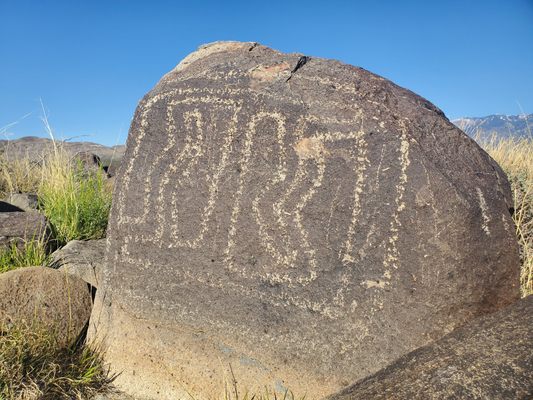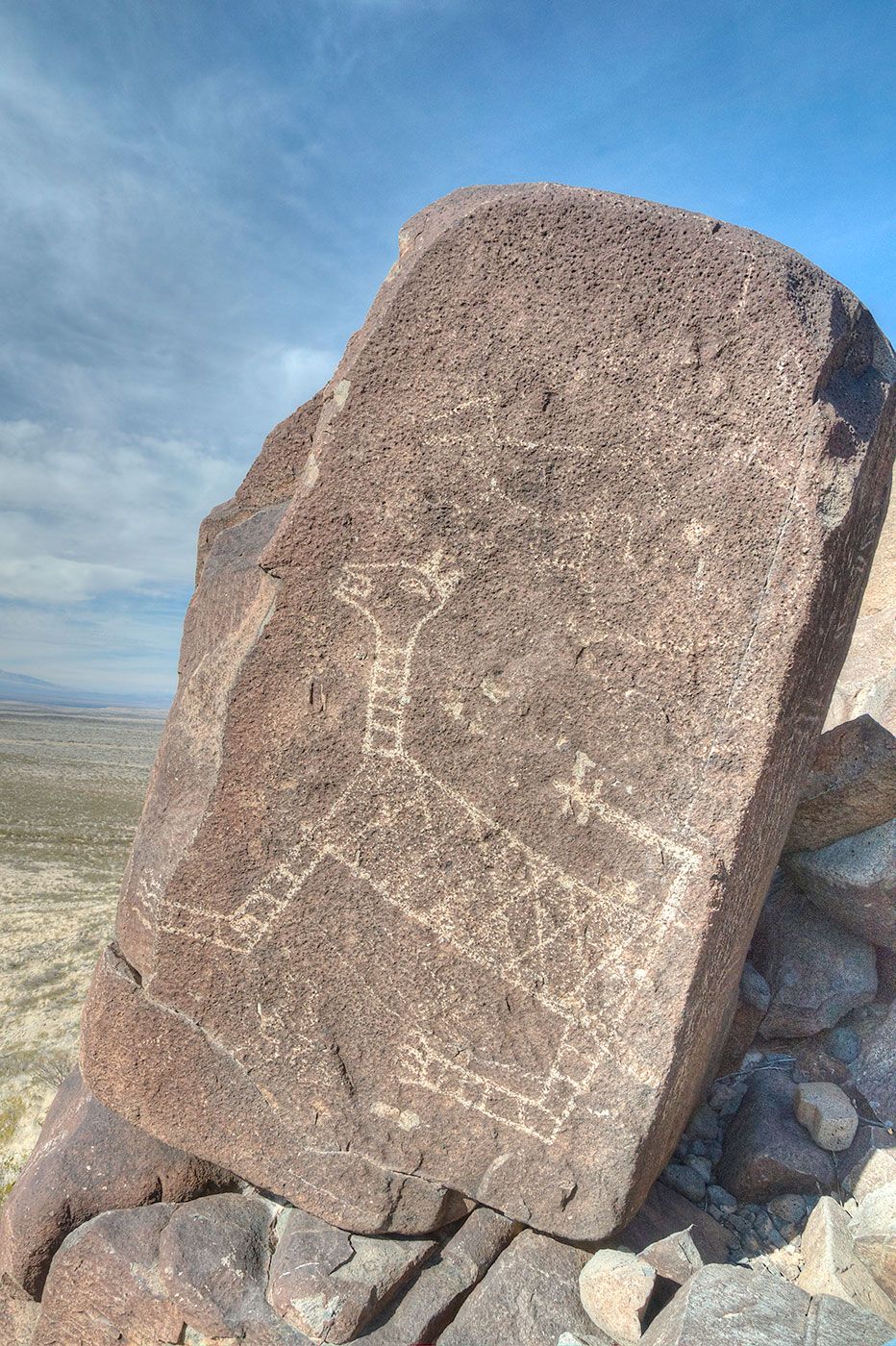About
Centuries ago, Mogollon people stood in front of these basalt rocks. Clutching stone tools, they scraped away bits of the dark film covering the boulders to create thousands of images that still survive today.
The Mogollon were one of the three major ancestral cultures that dominated the Southwest of what’s now the United States. Their culture flourished between 200 and 1450, and they’re the presumed ancestors of the Zuni and Hopi tribes. People who lived in the Mogollon region in the distant past had much in common with people living in the Ancestral Pueblo region.
Their presence still lingers within the land. More than 21,000 petroglyphs are scattered throughout a 50-acre patch of the Chihuahuan Desert in New Mexico. A menagerie of humans, wildlife, plants, and geometric and abstract figures is etched into the rocks. To those with an active imagination, the most hair-raising and alluring images are the otherworldly and mystical figures and depictions of slain animals.
Most of the rock art can be viewed from an easy-to-navigate one-mile round-trip trail. In addition to petroglyphs, a short trail from the picnic area leads to the partially excavated remains of a Mogollon village, whose inhabitants were likely the artists responsible for the rock art.
Related Tags
Know Before You Go
Do not touch or vandalize the rock art.
To reach the Three Rivers Petroglyph Site, take US 54 north from Tularosa for 17 miles. Turn right on Three Rivers Road (Otero County Road B30) and drive about 5.2 miles. The petroglyph site is on the left. Signage is good. Admission for day use is $5 per vehicle. Camping sites and RV hookups are available.
The trail, a one-mile loop, is somewhat rocky and rugged but with careful attention to footfalls. It should be accessible to hikers and walkers of all skill levels. This archaeological site is often overlooked and should be considered by those visiting White Sands National Monument, which is less than one hour to the south.
Published
August 10, 2018




































































































